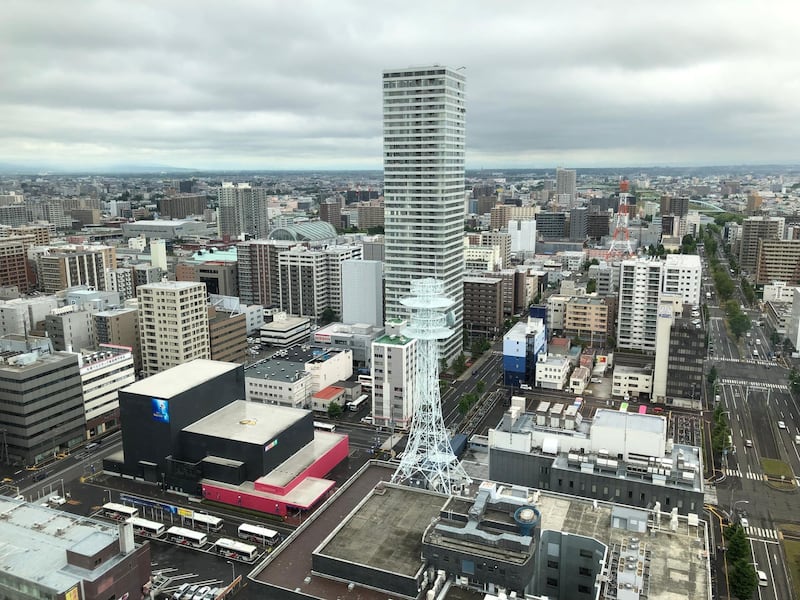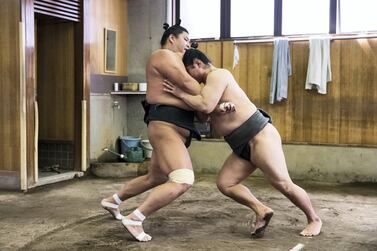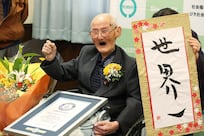Sapporo, the gateway to northern Japan, may not have quite the same neon-lit hustle and bustle of Tokyo or Osaka, but its scenic surroundings, laid-back pace and distinctive cuisine make it a worthy addition to any itinerary for visitors to the Land of the Rising Sun.
Deriving its name from the local Ainu language, Sapporo is a relatively new city and, despite being a popular destination for Japanese and foreign visitors, remains unspoiled by mass tourism. Its manageable size and proximity to Hokkaido’s green mountains and hot springs means it is the perfect place to enjoy Japan at a leisurely pace.
East of Sapporo’s landmark Odori Park is the TV Tower Observatory. A 60-second elevator ride (Dh24.50) inside the tower takes you 90 metres above the city’s streets to where you can enjoy a 360-degree view of Sapporo and the surrounding mountains. It is here that you can also meet Sapporo’s “Melon Kuma” (Melon Bear). This unnerving, hybrid creature acts as a kind of local mascot – its eyes will follow you as you do your souvenir shopping.
9am: Breakfast time
A five-minute walk to the south-east brings you to Nijo Fish Market. Home to dozens of seafood traders who offer no-frills dining on their premises, it is open from 7am all week long and is perfect for a healthy Japanese breakfast. You can order fresh king crab and have it grilled in front of you, accompanied by some piping-hot miso soup. Also available are sea urchin, clam, scallop, sashimi or oyster dishes ranging from about Dh70 to Dh150 in price. The market traders also do a brisk business in seafood donburi. Be quick though – the catch of the day can sell out fast.
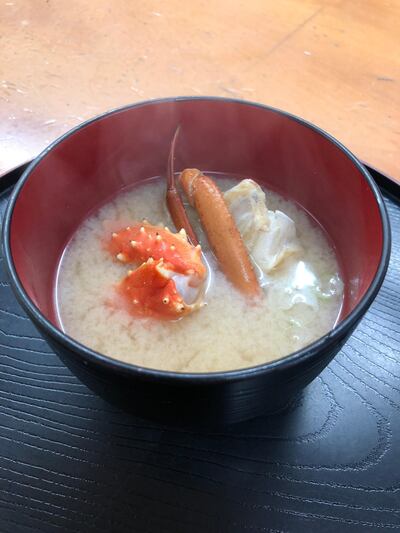
10am: Stretch your legs
Walk five minutes east to the Susukino tram stop and take the streetcar south to the Mount Moiwa Ropeway. From there, a free shuttle bus – which, in true Japanese fashion, runs like clockwork – will take you to the ropeway's base station. Adults can travel on the modern ropeway and cable car for about Dh60 return (children Dh28) to the top of the 531-metre Mount Moiwa. Gently soaring above the green forest that covers the mountain, the crisp air at the summit and the beautiful views of Sapporo make this an essential experience – weather permitting.
11am: Head for the hills
Take the streetcar back into town to the Susukino stop and travel two metro stops north to Sapporo's main rail and bus station. There you can buy an onsen day-trip pass (Dh70) from Jotetsu. This will give you unlimited bus travel to dozens of hot-spring resorts in the hills south-west of Sapporo. A 45-minute bus ride will take you to the spring town of Jozankei and your ticket doubles as a day-pass for many of its grand hotels, which have spring-fed hot baths in which to soak and relax. Recommended is Hoheikyo onsen – the last stop on the bus route. It has hot indoor and outdoor baths surrounded by lush forest. The resort is also a hit for its Indian cuisine – "kare", or curry, is a firm favourite in Japan – but the cold buckwheat soba noodles are also good.
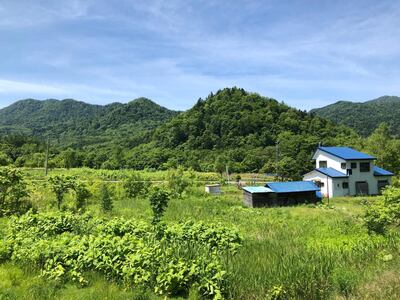
3pm: Statue spotting
Making your way back into Jozankei with your bus pass, stop to visit the Iwato Kannondo Buddhist temple. From the outside it looks like many other sacred sites in Japan, but a small metal door to the right of the altar will take you deep into a chilly 120-metre cave lined with 33 statues of Kannon, the goddess of mercy. A silent and sombre memorial, it is dedicated to the souls of those who died while building transport networks in the region.
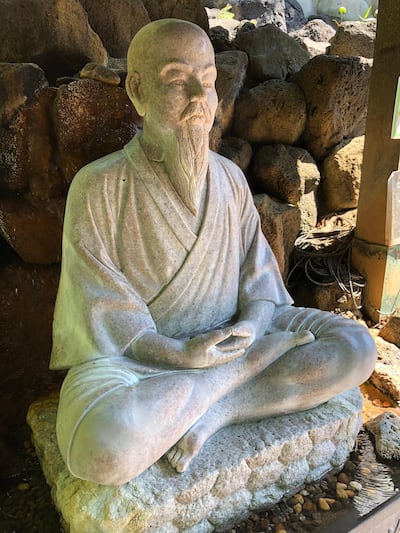
4pm: Local traditions
Enjoy a stroll around Jozankei before hopping on the bus again to travel back towards Sapporo. Ask to stop on the main road at Koganeyu Hall. From here it is a five-minute walk to the Ainu Culture Promotion Centre, a unique museum and research hub dedicated to the history of Hokkaido's indigenous inhabitants. For only Dh7 you can learn all about the Ainu's rich and distinct culture, which is not found anywhere else in Japan.
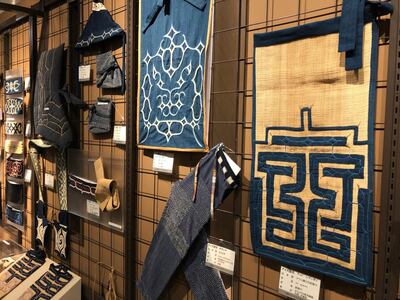
6pm: Chow time
After you catch the bus back into Sapporo proper, make a beeline for Sapporo Genghis Khan in Susukino. This spit-and-sawdust eatery is up a narrow flight of battered stairs but the smell of grilling beef will guide you. Pull up a seat at the always-busy counter and grill your own meat and veggies with the locals. Your chopstick skills will be put to the test but the aroma and taste are hard to beat. Remember to drink your small bowl of dipping sauce at the end, infused as it will be with the meat juices – intensely satisfying.
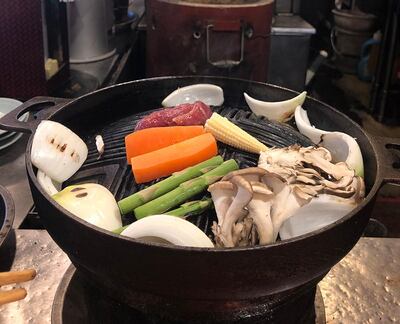
8pm: Hit the town
A five-minute walk north will take you to Tanukikoji – a long, covered shopping arcade that bustles with activity and will satisfy visiting shopaholics. The surrounding streets of Susukino are full of nightlife options, including the ubiquitous karaoke bars. For those who need a little help, there are night walking tours of Susukino run by locals that will guide you to the best spots.
Rest your head
There are plenty of options for all budgets, but Japan's APA Hotels chain has several branches in Sapporo that offer clean and cheap stays. There are also plenty of Airbnb options for those who want a Japanese homestay experience.
Getting there
Etihad and Emirates both regularly fly direct from the UAE to Tokyo. There are also plenty of domestic and international flights to Sapporo’s New Chitose Airport. Spring Airlines Japan runs a good, no-frills option with several flights a day from Tokyo Narita to Sapporo, one-way for about Dh260. Jetstar and Vanilla Air are other frequent, low-cost options. Public transport on Sapporo’s metro, tram and bus networks can all be paid for with a rechargeable IC card, which can be used across the country and also works for small over-the-counter purchases and in Japan’s array of vending machines.
